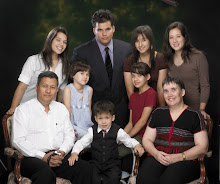PRIORITISEPlan your day and work in that of your family's activities and appointments. Fit it all in so you know exactly how to keep one step ahead of your family's needs and take the lead. Use a master calendar/planner. (It is best to make one yourself so you can customise). It is a fun project to do altogether as a family too. Laminate it so you can write on it with a white-board marker that wipes off easily when you need to update it. (Use stickers for permanent events such as birthdays and anniversaries. Stickers can still be removed if you so choose.) A day-a-page diaries are good for use on the move when you're out and about. Hand-held PCs are useful for this as well.
COLOUR-CODEDesignate a colour for each person in the household, preferably their favourite colour. Use it on the family calendar and for anything that belongs to that person, even down to the humble toothbrush. This method works extremely well for kids.
PERSONALISEPut yours and your children's names on it. This works especially well for larger families. Lunchbags, toothbrush, hairbrush, mugs, towels, trinket boxes, name plaques for bedroom doors etc. It gives each person a real sense of worth.
MINIMISEBy cutting down to the bare minimum that you really use (note I said USE not need). You can save time on washing dishes and laundry. Packing and finding certain items of clothing becomes a breeze. Also toys - less clutter.
CONTAINER-ISELaundry - a laundry basket for each person makes sorting and collecting clothes so much easier.
School - a personalised basket or box to place school lunches, permission notes, library books to be returned, excursion fees, completed homework sheets etc.
School bags and uniforms - A coat hook rack in the hallway near the front door works well to hand school bags, hats, jackets. School shoes and a box for school socks can be placed on a rack under the bags. A separate hanging space for school uniforms only also comes in handy. Minimises loss of items at the last minute rush our the door in the morning.
Project Box - Have a fairly large box regularly stocked with various project necessities such as coloured cardboard, marker pens, scissors, glue, old magazines, a variety of different stickers and pictures etc.
Knick-Knacks - In each room that is frequented by the whole family, have a box where you place any items that have strayed from their original place as you tidy and clean. Take the box with you when you leave the room and return all items to where they belong. Saves several trips back and forth around the house.
Keys - Buy or make a key rack, make sure that all keys are placed there the moment you come into the house. No more 'hunting for the keys' when you are about to go out the door. Keeps them out of reach from little hands too.
Wallets and Watches - Other easily lost items are your wallets and watches. Have a special box or drawer that you place these in. Good for belts and that special pen too. Make sure, as you would the keys, to place these items in their designated box/drawer the moment you take them off.
Coins - Have a kitchen kitty/piggy bank/money box. A decorative jar does the trick, where you place any stray coins and loose change. You can use it for milk and egg money or save it in the bank when full.
Lost and Found - This is different to clutter. Have a basket or box for miscellaneous items that you have picked up but not sure where they belong or who they belong to. Make sure to clear this out every couple of days - if the item is not claimed when you clear it, then it is classified as Junk.
A Junk drawer defeats the purpose, as you are less likely to sort through it than a basket or box.Keepsake Box - Have a personalised box for each member of the family which holds personal treasures such as handmade cards, artwork, baby photos, school photos, baby mementos - A memory lane box.
Laminate and Display - special photos, award certificates, kid's drawings etc. Also, another box can be for your child's personal treasure box to hold that special shell or pebble, or sentimental items - little 'secrets'.
Documents - This is different from personal treasures. This box holds all important document papers such as marriage certificates, birth certificates, diplomas, citizenship papers, passports, property deeds, stocks etc. It is advisable to get a
fire-proof box for these.
Birthdays and Special Events - Have a box with assorted wrapping papers, scissors, sticky tape, ribbons and assorted cards. Buy a small gift and birthday cards (or even make them yourself) each time to do your regular grocery shopping and place them in the box ready for on-the-spot birthday gifts for your children's friends or an unexpected birthday of a guest. Saves last minute panic and embarrasment.
Toy Cupboard - Designate a cupboard or bookcase for toys. Categorise all toys ie: Barbie dolls and accessories; toy cars; Lego blocks; board games; soft toy animals etc. Place them in suitably sized containers and label them (remember to label the lids as well). It helps to have ones that can stack up on top of each other. The children can then take one box out at a time and return it before taking out another. This saves toys getting thrown about helter-skelter when looking for that particular toy. No more lost toys or game pieces and no more clutter.
Storage - Do the same as you do for the toys (above), do for anything that you want to go into storage.
Copyright 2005. Rebecca Laklem
